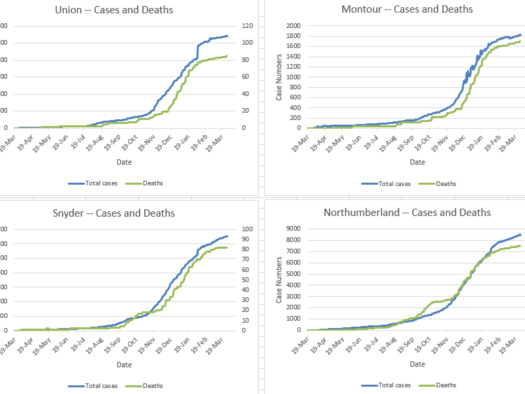Where to start?
The race between injections and infections is well and truly on. Each vaccination is a personal triumph, but we can't declare victory until the community is vaccinated -- that means about 80% with immunity (we're not sure the precise number yet and in fact it can change, depending on other factors like variants and individual behavior). Pennsylvania has not opened up vaccination to as wide a range of people as some other states yet which has some people very upset but on the other hand could be read as a positive since other states aren't that much further along but may be encountering more hesitancy and so need to expand the pool of the eligible in order to keep the demand on pace with supply.
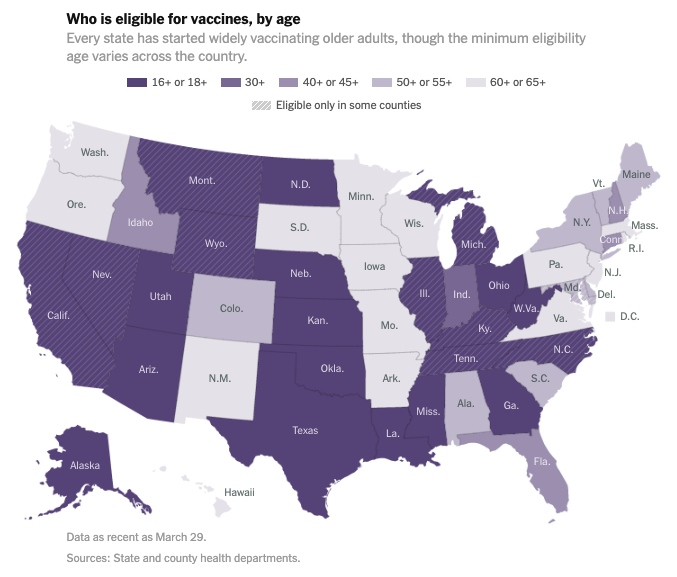
We have been in a supply shortage since January, with demand far outstripping the doses available, but, with multiple different vaccines and even cross-cooperation among manufacturers, there are lots more doses available for delivery now. And soon we are certain to get to the point where we have more doses available than people willing to step forward and take them. We certainly aren't there yet, but actually broadly opening up eligibility could mean other states are hitting the hesitancy wall much earlier. That's also why we're already ramping up the messaging to address hesitancy even before we have slots and shots for the reluctant. We need to work now in order to get the graphics designed and the billboards lined up.
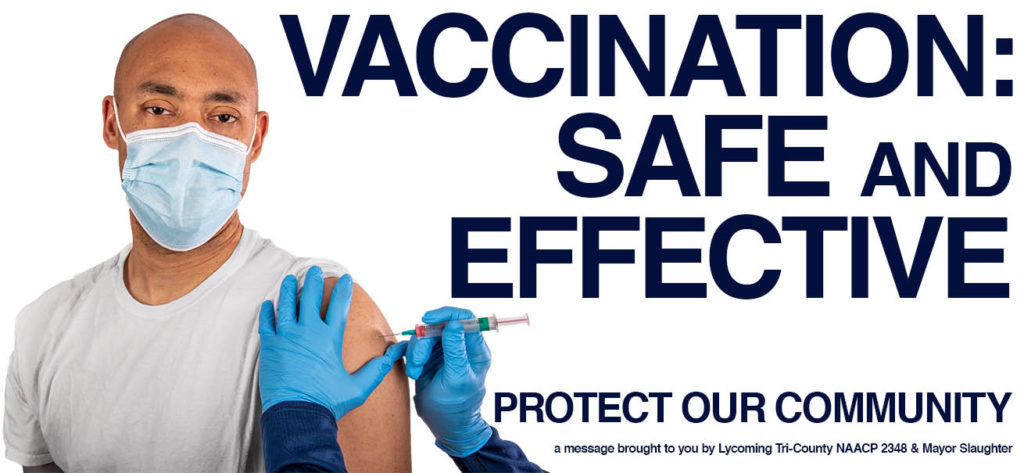
Meanwhile, it takes time to get people vaccinated one by one, so even with more supply, the increase in coverage is not instantaneous. Add to that the need for multiple doses and the further wait after the final dose until full efficacy and we are still looking at several months of hard work before we can hope to achieve immunity for the community.
And at the same time the virus itself is searching for vulnerabilities. Each replication (hundreds and thousands by individual cells, multiplied by the number of infected cells in an individual, multiplied by all the individuals currently infected... in other words really really big numbers!) is another opportunity for a lucky mutation that will make the virus more contagious and the vaccines we have less effective.
Given that, it is critical for those who have been vaccinated and have their protection at full strength to recognize that that new metaphorical suit of armor is very specifically tailored to the virus we have known for the past year. It is potentially vulnerable to the familiar virus' recent offspring. In addition, and in part because of the wildcard of the variants, we are not sure that vaccination provides what's called sterilizing immunity which means a given host is a dead-end. We do have evidence that the vaccines provide excellent protection for most people against getting severely ill or dying of the original strain. We don't know either whether non-severe cases that can still happen would themselves be contagious (potentially more asymptomatic spread) or -- even if there is sterilizing immunity when it comes to the original strain -- whether cases arising from variants in vaccinated people are still going to be contagious. Though as of today, one study is reporting good success for both the two dose vaccines against the B.1.1.7/UK variant!
What does this mean in day-to-day reality? The vaccinated should breathe a big sigh of relief but then they should cut others and themselves a break and continue to mask and distance in public. They can go to the grocery store or work or do errands, but they should still be wearing masks, reducing opportunities for exposure, looking out for good ventilation, etc. Why? Because, though vaccinated, you are still:
- A potential threat to unvaccinated people around you (particularly those 50-65 and any of the 60+% of seniors who haven't yet been fully vaccinated), and
- At risk from people around you who might be infected with variants against which your vaccine is less protective.
The variants really are key to the next months. So what is going on with them anyway? It's a bit hard to say with any level of local detail, but we do know several notable strains are now in PA, including in State College. Remember though that while there is COVID testing happening, the standard tests do not also give the genomic results needed to ID variants, so the numbers shown on the CDC map below are more an indication that there is some variant in the state, not the total number of associated cases.
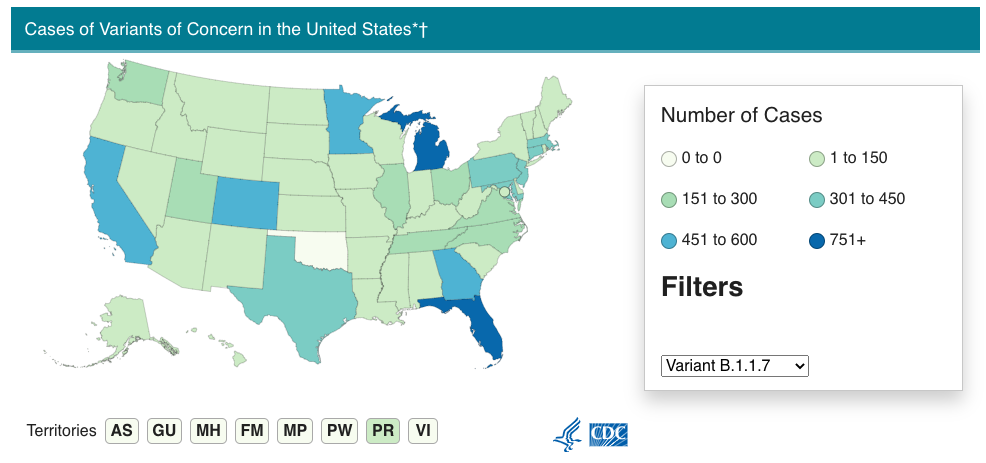
Several of our windows into national data on the pandemic have closed in recent weeks with both the White House Coronavirus Task Force no longer putting out reports (not that anyone knew they existed or where to find them in the first place) and the COVID Tracking Project shutting down operations, we are having to depend on other sources. There are federal and state press briefings regularly on the topic, but those are not the same as data visualization and number crunching. Fortunately Our World In Data, the New York Times, and Johns Hopkins University continue to be on top of things.
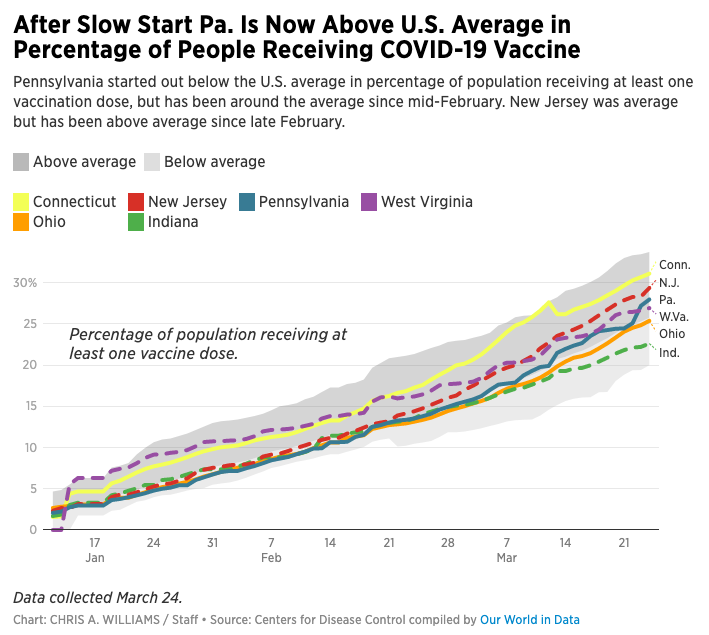
The NYT page that tracks vaccine rollout recently expanded to include county-by-county data in addition to overall state info. It's all a bit deceiving as a horserace since most states are within a fairly narrow window of between 11 and 22% fully vaccinated (UT and GA lagging and NM out ahead) and between 22 and 36% for partially vaccinated (GA again lagging and NM and AK out ahead). In other words, aside from those few outliers, by a lot of different metrics, most of the states are sort of in the middle of the pack.
In Union County as of March 28 13.6% of the population have received a full dose of vaccine (this is based on the Department of Health dashboard which is not quite lining up with the NYT map info), though not all of those have of course as yet made it to 14 days after the final dose, and another 9% have received a partial dose (that's according to the PA DOH Vaccine Dashboard).
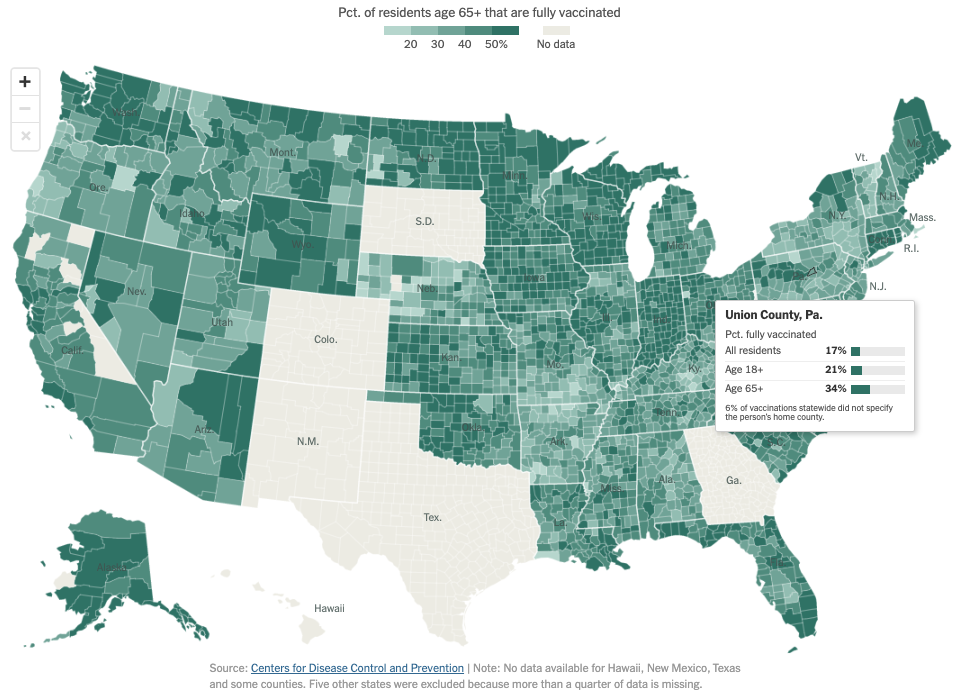
We can do a little more math to get a more complete picture of local immunity. Our presumed case rate is around 12% cumulatively over the past year. With about 11% of the county population having had a presumed case in the last 6 months and therefore hopefully having at least some lingering immunity. Recognizing the presumed case count is inevitably an undercount, but by less in recent months as compared to early on, and combining that with our vaccination percentage, we are probably still at the rosiest best at around 45% having some kind of immunity, both natural and induced. That is not yet sufficient to qualify as herd immunity as best we can tell.
And given the (growing) disinclination of rural men to get vaccinated as indicated in recent studies, while we expect the number with immunity to climb with continued vaccine rollout over the next few months, the total may not rise anywhere near the proposed 80-85% target for quite some time...
In spite of all this it is abundantly clear that large numbers of people are feeling "done" with COVID. Parties and gatherings are busting out all over, both raucous and sedate. (Cue the holiday heavy -- Easter is not a good time to gather all in person yet.) Rising case counts alone don't necessarily spell super bad news if the people getting ill wind up with mild cases, but unfortunately hospitalizations are also rising again, hopefully at a slower rate with a proportion of our seniors protected. Though as the NYT map shows, in Union County only 34% of the over 65 population has been fully vaccinated so far. And again, each of those cases, even if less severe, presents more opportunities for new variants to emerge.
Watching all this, it seems like some of the CDC guidance for allowable behavior post vaccination was naive. First off, there had been debates in the public health community about whether promise of a return to normalcy after vaccination would be necessary to boost demand. That is pretty much what we went with, but now we're dealing with the follow-on effects, specifically that people who have been vaccinated are not at all ready to hear that they are not completely done with mitigation measures. The second count of naivete has to do with the decision to allow vaccinated people to gather not only with other completely vaccinated people in private, but also to include one household's worth of unvaccinated people so long as none of them were at high risk or lived with anyone at high risk. This was intended to facilitate long-deferred family mini-reunions, but instead seems to be read as permission to hold serial meetings with a string of different unvaccinated people. That wasn't really the point. And having many different meetings with unvaccinated people is not really a great idea right now.

Here's hoping the aftermath of St Patrick's Day, Passover, and Easter are more akin to what we saw last year following the 4th of July and Labor Day, rather than Thanksgiving! Let's just keep that incidence rate wiggling along down "low" while we work on getting more and more shots in arms.

